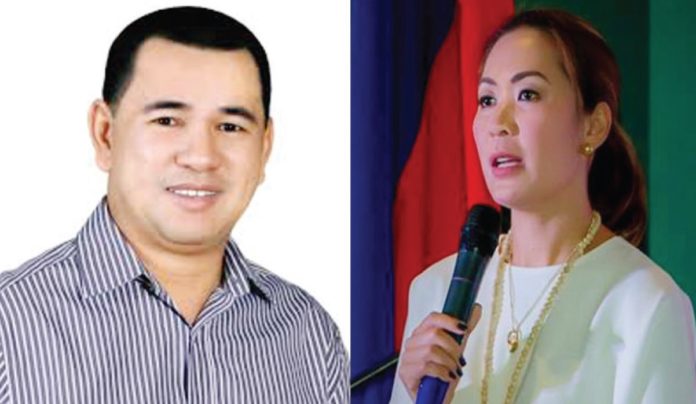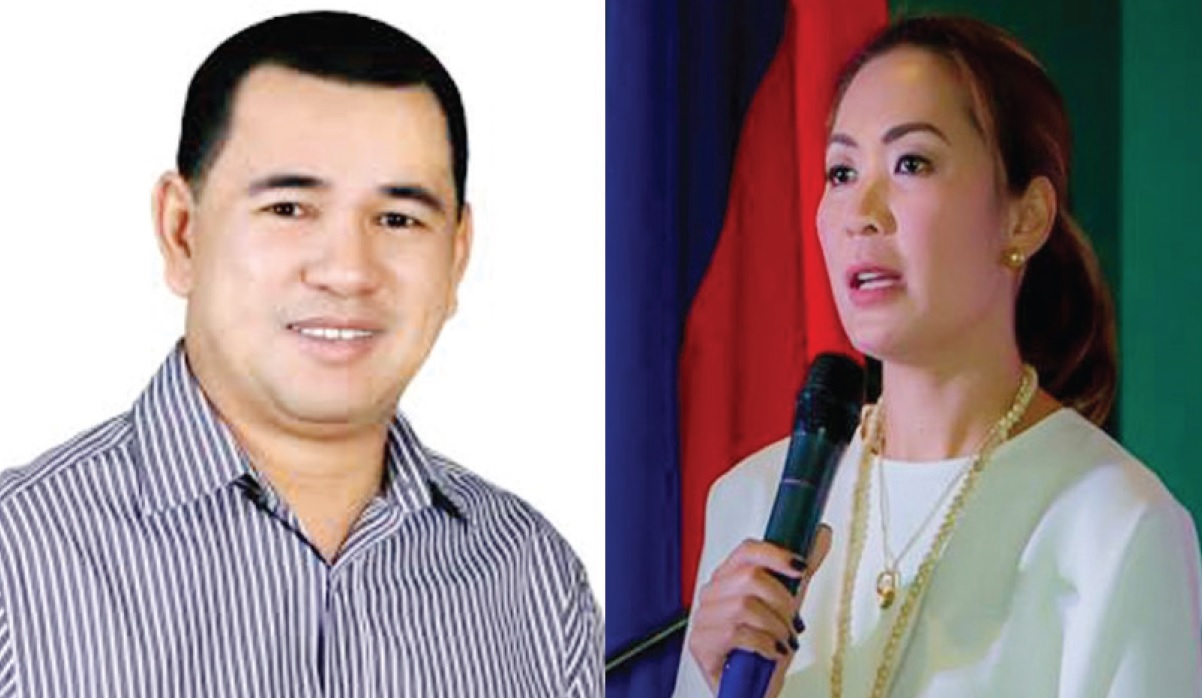CATARMAN, Northern Samar – Two separate encounters transpired in Northern Samar and Samar on January 21, 2019.
Elements of 803rd Infantry Brigade responded to separate distress calls of civilian on the New People’s Army (NPA) extortion activity in Barangay Epaw, Las Navas, Northern Samar and Barangay Calundan, San Jorge, Samar.
About 12:10 pm, personnel of the 81st Division Reconnaissance Company (DRC), 8ID, PA encountered more or less 10 fully armed NPA as troops responded to the report of NPA presence in the area.
Said NPAs were members of Front Committee 1 (FC-1), Sub-Regional Committee (SRC) “Emporium” under certain Norma Ultra AKA Ka Aya, Ka Dodo and Ka Basoy. Firefight lasted for about five minutes before the NPA fled. Government troops are still on pursuit.
An hour later, about 1:32 pm, another encounter transpired between personnel of 83rd Division Reconnaissance Company (DRC), 8ID, PA and 20 fully armed NPA of Central Front Samar, SRC “Browser” under Eldie Dela Cruz AKA Ka Star and Bernabe Linay AKA Ka Payo in Brgy Calundan, San Jorge, Samar.
Firefight lasted for 20 minutes before the NPA hastily fled leaving behind subversive materiel and documents, including personal belongings.
Brgy Calundan is approximately five kilometers away from Brgy Bay-ang, San Jorge where the Eastern Visayas Regional Party Committee (EVRPC) main camp were overrun by personnel of 803rd Brigade last January 11, 2019.
B/Gen. Ramil M Bitong, commander of 803rd Infantry Brigade, said “The reports of the people that led to location of the NPA manifested the people’s rejection of these armed bandits who have long been pestering isolated communities.
Gen Bitong added that he is expecting more of these encounters until these bandits are banished. “These misled NPA’s still have the chance to avail the government’s Enhanced-Comprehensive Local Integration Program (E-CLIP) before it becomes too late.” (PR)
Gov’t troops preempted NPA extortion activities
LGU medical scholar grad now works at South Leyte prov’l hospital
MAASIN CITY- The medical scholarship program of the provincial government of Southern Leyte is starting to pay-off as some medical scholars now become professional doctors after passing the medical board examination in 2018.
One of them is Dr. Lezgard John Gonzales, 27, who now works as a professional doctor at the Salvacion Oppus Yniquez Memorial Provincial Hospital (SOYMPH). He is now among the roster of physicians at the provincial hospital since December 2018.
According to Dr. Gonzales, as a beneficiary, he is bound to follow the scholarship program agreements with the provincial government to serve two years for every year of financial assistance accorded to him as a medical scholar.
“I have to serve six years at the provincial hospital since I have been a medical doctor scholar for my last three years in the proper medicine when the provincial government started to enlist me among the scholars of the program,” Gonzales said.
Dr. Gonzales is a graduate of Nursing as his pre-medical course.
Gonzales added that once a medical scholar became professional doctor, he/she is immediately employed at the provincial hospital and be one of the regular employees at the SOYMPH and enjoy fringe benefits.
The medical scholarship program is the long-term solution crafted by Rep. Roger Mercado during his stint as governor to solve the scarcity of practicing medical doctors serving at the provincial hospital and other district hospitals run by the provincial government.
(LDL/ESG/PIA-8 SOUTHERN LEYTE)
Comelec tags 70 as EV’s areas of concern
Relative to the May 13, 2019 midterm elections
This early, Mendros is calling all the candidates to do their part in making the elections peaceful and orderly.
TACLOBAN CITY- About 70 areas here in the region were tagged by the Commission on Elections (Comelec) as ‘areas of concern’ relative to the May 13, 2019 midterm elections.
And majority of these areas of concern are in Samar and Northern Samar, said lawyer Jose Nick Mendros, Comelec regional director.
Mendros, however, could not exactly say as to how many of the 70 areas of concern where in Samar and Northern Samar.
These areas were identified as such due mainly to intense political rivalries; presence of either a private armed groups or members of the New People’s Army; and election-related violence that occurred prior the conduct of the election.
The Comelec regional director declared that so far, there are no hot spots in the region relative to the conduct of the May 13 balloting.
An area is labeled as a hot spot if there are existing incidents that are cleared to be election-related. A hot spot area is a candidate for to be placed under the control of the Comelec.
“And we don’t have it here in the region,” Mendros said, referring to an area classified as a hot spot.
But Mendros said that there is possibility that additional forces, either police or soldiers, could be deployed in areas considered as concern areas to ensure that the conduct of the balloting will be peaceful and orderly.
“That’s a possible reaction,” the Comelec regional director said, referring to augmentation of security forces.
Eastern Visayas has about 4,390 barangays.
This early, Mendros is calling all the candidates to do their part in making the elections peaceful and orderly.
“As election administrator, we don’t like our elections to be violent,” he said.
Mendros said that they are supporting the conduct of peace signing covenants among the candidates as a way to ‘conscientize’ them and give their full commitment that the balloting at their respective area would be orderly and peaceful.
To recall, the Comelec in coordination with the Philippine National Police and the Armed Forces here in the region initiated peace signing covenants on Jan.20 as one of the measures of ensuring a peaceful and orderly conduct of elections.
(JOEY A. GABIETA)
Governors Petilla, Tan express different views


In lowering criminal liability of children
TACLOBAN CITY- Governors Leopoldo Dominico Petilla of Leyte and Sharee Ann Tan of Samar expressed contrasting views on the issue lowering the age on the criminal liability involving children.
For Gov. Petilla, the government could just be ‘pressured’ why it want to lower the age on criminal liability of children who are involved in illegal activities.
“I think, while the responsibilities (in disciplining) our children rests on the shoulders of the parents, I think the government is pressured to do something,” he said.
And this something, he said, could involve in ensuring that children would not fall prey to illegal activities like illegal drugs and by coming such a policy, it could serve as a deterrent.
Petilla believe that the government, in pushing this controversial policy, is not making these minors criminals but rather it want to act as a ‘responsible parent.’
But for Samar Gov. Tan, this move should not be rushed without first the government, particularly members of Congress, getting a thorough information or data involving children who figured in criminal activities.
“We should have a medical side on this issue and hard data like what age children are mostly involved in criminal cases,” she said.
She, however, admitted that some minor children are now ‘smart’ who have understanding of the consequences of their actions.
Congress has earlier approved a measure putting criminal liability as young as nine years old but this was later modified to 12 years old after various sectors expressed their opposition to the said measure.
Meantime, the City Social Welfare and Development Office (CSWDO) in Tacloban City said that it remain steadfast of its principle that putting criminal liability to minor age 9 or 12 remain unacceptable.
Chona Bahin, in-charge of youth program of the CSWDO, said that instead of punishing these children, it should be their parents who should be held liable.
“These children are just victims of circumstances and did not act these illegal acts of their own doing,” she said.
In the city, their office maintains a holding center where about 30 minors or those aged below 17 are temporarily placed while their cases are still being heard in courts.
Most of these children are involved in theft, robbery, rape, murder, and illegal drug activities.
“But the environment there is not like of a prison facility. It’s like they are still in a house where they are feed three times a day with a snack,” Bahin said.
The children there are also taught value formation, reading, sports activities, and gardening.
“We don’t treat them as criminals but just children in conflict with the laws,” Bahin said.
Bahin also said that the city government is soon to construct its own ‘Bahay Pangarap’ as required by law where minor children would be placed.
For this facility, to be constructed in Barangay 91, Abucay district, the city government will have a P5 million as a counterpart while the Department of Social Welfare and Development through the Juvenile Justice Welfare Council will provide P5 million.
By: JOEY A. GABIETA
Board members file falsification of public documents against acting Gov. Picardal, other officials
In Eastern Samar
TACLOBAN CITY- Eight members of the provincial board in Eastern Samar filed criminal and administrative charges against acting Governor Marcelo Ferdinand Picardal, acting Vice Gov. Jonas Abuda, among others, for reportedly falsifying documents relative to the 2018 provincial budget of P1.28 billion.
On their complaint-affidavit before the Office of Ombudsman- Visayas, board members Celestino Cabato, Byron Suyot, Karen Alvarez, Annabelle Capito, Jaime Ty, Ma. Caridad Sison-Goteesan, Maximo Zacate, and Aldwin Aklao, alleged that Gov. Picardal, Vice Gov. Abuda together with Franklin Robedizo, provincial board secretary, and Annabelle Echavez, regional director of the Department of Budget and Management(DBM), colluded with each other to approve 2018 provincial budget despite of lacking documents as required.
The respondents were accused to have committed falsification of official document, dishonesty, grave misconduct, and conduct prejudicial to the best interest of the service.
On their nine-page complaint they filed before the anti-graft court on December 13,2018, with the Leyte Samar Daily Express obtaining a copy over the weekend, claimed that the provincial board did not approved the 2018 annual investment plan(AIP), which serves as the legal basis of the 2018 annual budget during their January 5 regular session.
However, considering that it was already the start of the fiscal year, they have agreed to pass the 2018 AIP in ‘principle’ pending the submission of lacking documents by Gov. Picardal.
With the approval of the AIP, the 2018 provincial budget was also approved in principle.
“(But) without our knowledge or information, acting Vice Gov. Abuda and Franklin Robedizo, and approved by acting Gov. Picardal, taking advantage of their positions, in collusion and in conspiracy with each other by means of fraud, deceit, and misrepresentation, unlawfully and feloniously prepared, issued, and falsified Appropriation Ordinance No.18-30 (involving)P1.28 billion)…by themselves alone and wilfully deviating from our established procedure for us to affix our signatures…,” the complainants said.
The same ‘falsified’ appropriation ordinance was submitted and approved by the regional DBM office as represented by Echavez.
Reached for his comment, Robedizo dismissed the allegation saying that it was nothing but politically grandstanding.
He said that the budget was duly approved by the provincial board members, one of the complainant, Cabato, served as its movant.
“Nobody interposed and objected when it was approved. It was already reviewed and approved by the DBM and declared as operative by the DBM,” Robedizo said.
Incidentally, the provincial government of Samar is operating under the 2018 budget as its proposed 2019 P1.4 billion budget has yet to be approved by the members of the Sangguniang Panlalawigan.
(JOEY A. GABIETA)
